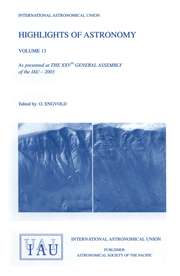No CrossRef data available.
Article contents
Summary of Available and Planned Atomic Databases
Published online by Cambridge University Press: 30 March 2016
Extract
Core share and HTML view are not available for this content. However, as you have access to this content, a full PDF is available via the ‘Save PDF’ action button.
Several of the larger and more inclusive atomic data centers and databases useful for space astronomy are briefly described here. Bibliographic reports on atomic and molecular data useful for astronomy are given in Ref. [1].
- Type
- Joint Commission Meetings
- Information
- Copyright
- Copyright © Kluwer 1992
References
4. References
[1]
McNally, D. (Ed.) 1991, Reports on Astronomy: Trans. IA.U. XXI A, Kluwer Academic, Dordrecht, pp. 105—136.Google Scholar
[2]
Sugar, J. and Corliss, C.
1985, Atomic Energy Levels of the Iron-Period Elements: Potassium through Nickel, J. Phys. Chem. Ref. Data 14, Suppl. 2.Google Scholar
[3]
Martin, G. A., Fuhr, J. R. and Wiese, W. L.
1988, Atomic Transition Probabilities—Scandium through Manganese, J. Phys. Chem. Ref. Data 17, Suppl. 3.Google Scholar
[4]
Fuhr, J. R., Martin, G. A. and Wiese, W. L.
1988, Atomic Transition Probabilities-Iron through Nickel, J. Phys. Chem. Ref. Data 17, Suppl. 4.Google Scholar
[5]
Seaton, M. J.
1987, J. Phys. B
20, 6363–6378; Mendoza, C., summary of Opacity-Project results in this volume.Google Scholar
[6]
Kurucz, R. L.
1991, “New Opacity Calculations”, in Crivellari, L., Hubeny, I. and Hummer, D. G. (Eds.), Stellar Atmospheres: Beyond Classical Models, NATO ASI Series, Kluwer Academic, Dordrecht, pp. 440—448.Google Scholar
[7]
Smith, J. J. (Ed.) 1991, International Bull. Atomic and Molec. Data for Fusion, No. 42, Int. Atomic Energy Agency, Vienna; and preceding issues.Google Scholar


